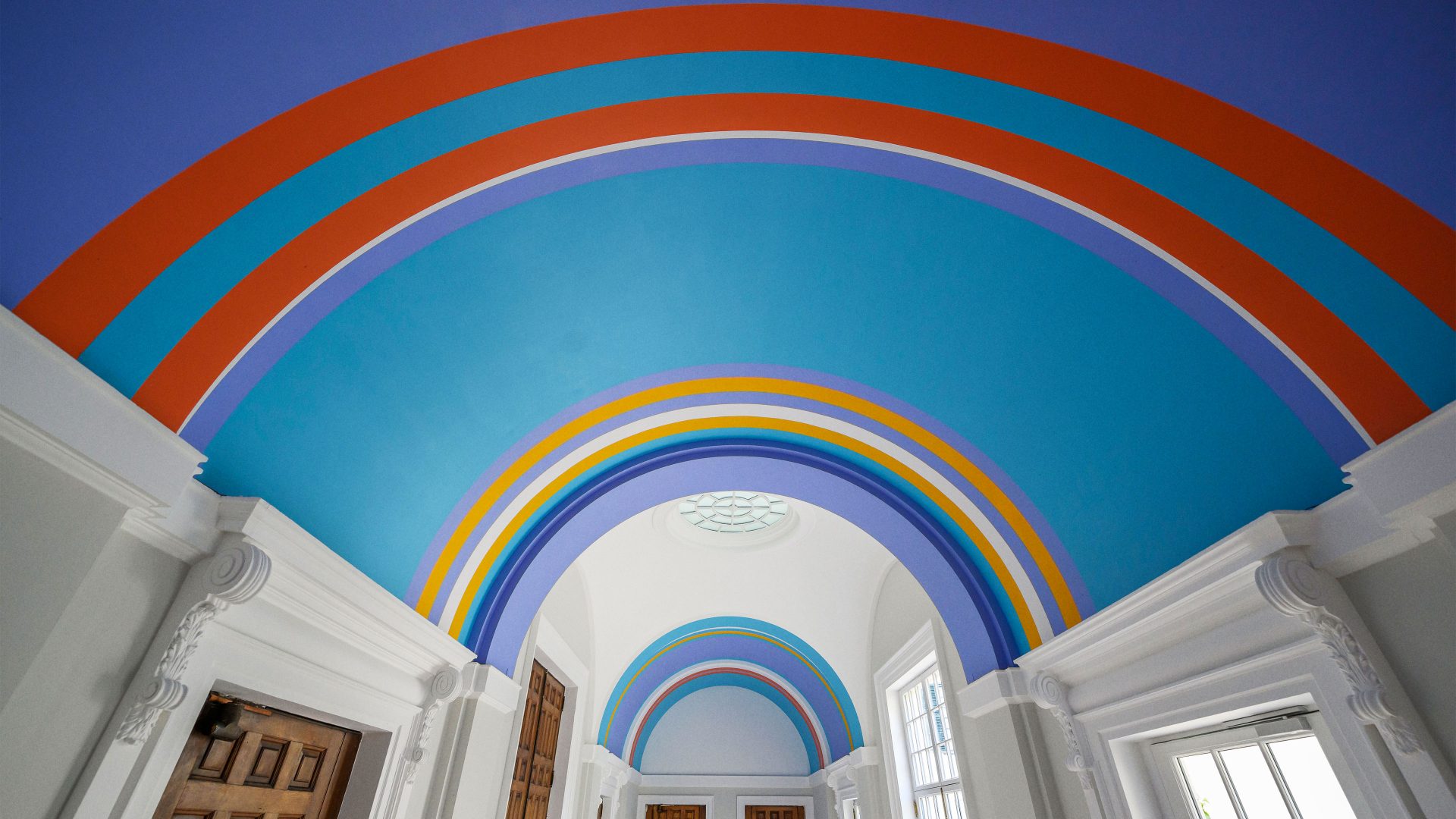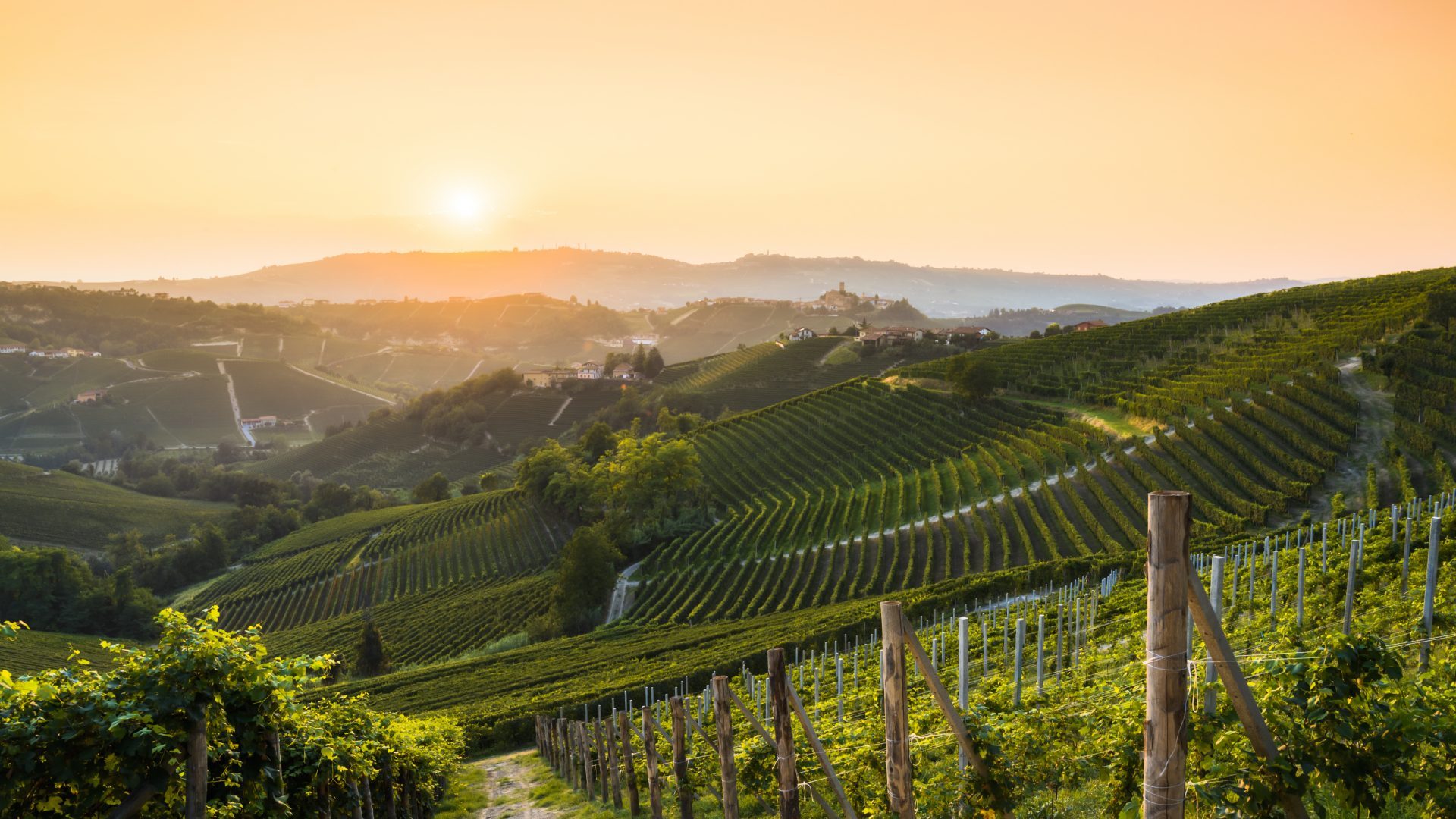Unlike Michelangelo, Bridget Riley did not paint her ceiling in Rome while lying on her back. Riley – arguably Britain’s greatest living artist – is now 92, and in common with her Renaissance forebears, has a team of assistants. Three of them spent most of April completing the work in the foyer of the city’s British School (BSR).
Titled Verve, the painting is Riley’s first ceiling work and her gift to an institution that, since it was founded in 1901, has nurtured the cultural and intellectual bonds between Britain and Italy. Stripes of varying widths follow and articulate the curve of the barrel vaults in the familiar blues, red, and golden yellow of the “Egyptian palette” Riley developed in response to the colours of ancient tomb paintings, and the landscape she saw on a trip to Egypt in 1979.
While unmistakably the work of the Op Art pioneer, the painting also recalls the ceilings of many Italian renaissance and baroque churches, which are often painted a vivid, ultramarine blue. At this time of year, aided by large windows and full-length doors that open on to a courtyard filled with the scent of orange and lemon blossom, the ceiling seems to carry the brilliant blue Roman sky indoors. Riley described the project as “an exhilarating visual chase”. She said: “Looking up, the colour of the skies offers a glimpse of nature in her most promising and serene mood.”
The painting was the culmination of round two years’ work, focused originally on a different location at the BSR. Riley described the project as a “perceptual adventure”, and she explored the “colour acoustics” of the space with the help of an architectural model of the building designed by Edwin Lutyens, originally as a temporary structure before being leased permanently to the BSR in 1916.
Before the painting could begin, the ceiling was prepared by a team of Italian specialist craftsmen who reskimmed and hand-sanded the area. Operating from a specially designed two-level scaffold that allowed them to lean back while they worked, Riley’s assistants plotted guidelines using a portable laser resting on the cornice, applying the colours entirely by hand.
Michelangelo designed his own scaffold in the Vatican, and according to the 16th-century art historian Giorgio Vasari: “The work was executed with very great discomfort to himself, from his having to labour with his face upwards, which so impaired his sight that for a time, which was not less than several months, he was not able to read letters or look at drawings save with his head backwards.”
Though Riley’s painters had the advantages of modern technology, BSR’s director, Prof Abigail Brundin, said that the work was “physically demanding”, and that the painters had all needed physiotherapy. The “team were eating lunch daily with our community and sharing their experience of painting on to a vaulted ceiling as Michelangelo did in a building nearly 500 years ago, with the accompanying physical difficulties,” she said.
The woman from Norwood might not seem to have much else in common with the man from Florence, and Riley’s precise, geometric arrangements have led to her being misunderstood as a creator of fiendishly clever tricks and effects. Nevertheless, her ceiling shows a precise link with Michelangelo – it is yet another hymn, as she says, to “our own powers of sight, emerging as one of the great mysteries and delights of being alive.”




